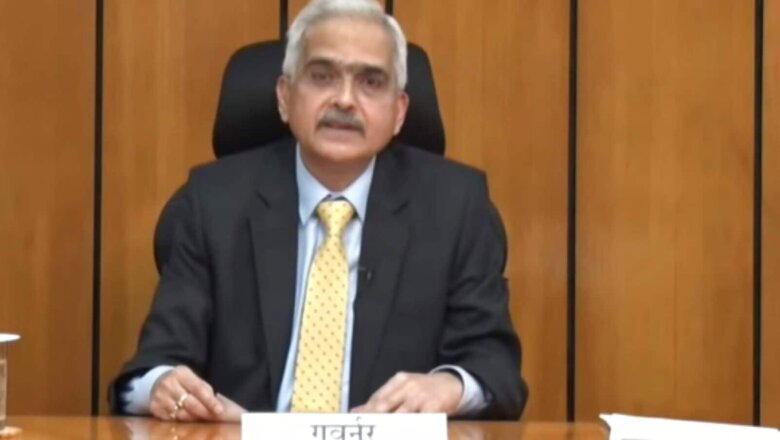
views
The RBI’s Monetary Policy Committee (MPC) on Friday decided to raise the repo rate by 50 basis points (bps) to 5.9 per cent with immediate effect and maintained the stance at the ‘withdrawal of accommodation’. It has revised downwards FY23 GDP growth forecast to 7 per cent from 7.2 per cent earlier. The central bank, however, has retained its retail inflation projection for FY23 at 6.7 per cent. RBI’s key decisions here:
Repo Rate Hiked By 50 bps
The RBI on Friday increased the repo rate by 50 basis points to 5.9 per cent, the fourth time increase in a row. In the past four subsequent monetary policy reviews since May this year, the RBI’s rate-setting panel has raised 190 basis points in total. The repo rate is the interest rate at which the RBI lends to the commercial bank.
While presenting the latest bi-monthly monetary policy statement, RBI Governor Shaktikanta Das said, “The world has been confronted with one crisis after another. Now, we are in the middle of another storm of global monetary tightening.”
The standing deposit facility (SDF) rate is now at 5.65 per cent and the marginal standing facility (MSF) rate at 6.15 per cent. The SDF is the lower band of the interest rate corridor, while the MSF is the upper band.
Inflation Forecast Retained
The RBI again retained its inflation forecast at 6.7 per cent for the current financial year 2022-23. The RBI’s target for CPI-based inflation is 2-6 per cent. India’s retail inflation in August soared to 7 per cent, remaining above the RBI’s upper tolerance limit of 6 per cent for eight straight months.
The RBI governor said, “The Indian basket crude oil price was around $104 per barrel in H1:2022- 23. Going forward, we are now assuming it to be $100 per barrel in H2:2022-23. Taking into account these factors, the inflation projection is retained at 6.7 per cent in 2022-23, with Q2 at 7.1 per cent; Q3 at 6.5 per cent; and Q4 at 5.8 per cent, with risks evenly balanced. CPI inflation is projected to further reduce to 5.0 per cent in Q1:2023-24.”
FY23 GDP Forecast Lowered
The RBI lowered its FY23 GDP forecast to 7 per cent, from 7.2 per cent earlier. India’s GDP grew by 13.5 per cent in the June 2022 quarter.
Das said, “The headwinds from extended geopolitical tensions, tightening global financial conditions and possible decline in the external component of aggregate demand can pose downside risks to growth.”
He added that taking these factors into consideration, real GDP growth for 2022-23 is projected at 7 per cent with that for the second quarter at 6.3 per cent; third quarter at 4.6 per cent; and fourth quarter at 4.6 per cent, with risks broadly balanced. The growth for Q1:2023-24 is projected at 7.2 per cent.
Criteria for RRBs To Provide Internet Banking Facility To Be Rationalised
Das said that the criteria for regional rural banks to provide internet banking facility to customers is being rationalised. “The revised guidelines will be issued separately.”
Currently, RRBs are allowed to provide internet banking facility to their customers, subject to fulfilment of certain criteria.
Offline Payment Aggregators To Come Under RBI Regulations
The RBI governor said offline payment aggregators will also now come under the purview of the RBI regulations, to bring in regulatory synergy and convergence on data standards. Online payment aggregators (PAs) have been brought under the purview of RBI regulations since March 2020. “It is now proposed to extend these regulations to offline PAs, who handle proximity/ face-to-face transactions,” Das said.
Discussion Papers on Loss Provisioning by Banks, Securitisation of Stressed Assets Framework
RBI Governor Shaktikanta Das said the central bank will issue a discussion paper on the proposed transition for stakeholder comments as a step towards converging with globally accepted prudential norms.
He said banks currently follow the incurred loss approach for provisioning on their loan assets, whereby provisions on loan assets are made after the stress has materialised. A more prudent and forward looking approach is the expected loss based approach, which requires banks to make provisions based on an assessment of probable losses.
A discussion paper on the Securitisation of Stressed Assets Framework is also being issued for feedback from stakeholders, he said.
Read all the Latest Business News and Breaking News here




















Comments
0 comment